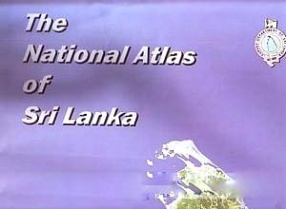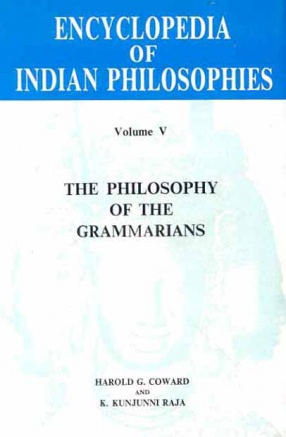The Survey Department of Sri Lanka which functions under the Ministry of Lands and Land Development is proud to launch the second edition of the National Atlas, since its first publication in 1988 and thereby marking yet another milestone in its long history of 208 years. The first copy of it will be presented to His Excellency the President of the Democratic Socialist Republic of Sri Lanka, Mahinda Rajapaksa at a ceremony to be held on the 16th of July at Temple Trees. It is an important milestone for many reasons. During the past two decades, the country has undergone significant social and economic changes which have had an impact on the physical, social and economic conditions of the nation. Remarkable changes have taken place in the fields of Agriculture, Demography, Transport, Industry, Commerce, Administration and Infrastructure Development. Two unfortunate events, namely the civil unrest in some parts of the country and the unprecedented impact of the Tsunami of 2004 too have contributed to the changes in the socio-economic scenario.
In view of the above, and the availability of more recent data from the Census of Population of 2001 and numerous other surveys conducted since the publication of the first edition of the National Atlas, the Survey Department embarked on this challenging task of producing a more detailed and comprehensive publication. Thus the Department took immediate steps to establish an Editorial Board under the chairmanship of the then Surveyor General Mr. Ranasinghe Silva. The editorial board consisted of eminent persons with considerable experience and expertise in their respective fields drawn from the National Universities and Government Departments. The immediate task of the editorial board was the selection of themes that are relevant to a National Atlas. The next task was the identification of local experts to write the required articles according to the agreed design and contents in order to facilitate the work of the Atlas, the Survey Department set up an Atlas Unit which was responsible for the production of the Atlas. As Chairman of the Editorial Board, the Surveyor General had to play a pivotal role in the entire production of the National Atlas over the past five years.
Despite many constraints, the new edition of the National Atlas has been published. The nine themes in the first edition were enlarged to twelve and the 58 sub themes to 80 with each section committed to a well documented and authentic information. The themes are (1) Location maps (2) Maps of Sri-Lanka (3) Physical and Biological Environment (4) Archaeology and Arts (5) Population (6) Agriculture (7) Transport Energy and Industry, (8) Commerce (9) Economy (10) Government, Administration and Justice (11) Social Conditions (12) Education and Training. Each theme has been sub-divided into several well integrated sub-themes. The Atlas comprises 253 pages with 31 colourful full page maps and 27 multi-scale maps, 207 other map-figures as well as numerous tables and 80 texts. Colourful photographs have been used for visual impact, where necessary. Out of the 80 sub-themes, special emphasis has been paid to physical and biological environment. The sub themes which include Geology, Mineral Resources, Oceanography, Climate, Natural Hazards and Disasters, etc. Some of the other prominent themes are Archaeological Reserves and Protected Monuments, Population Growth, Distribution and Density, Ethnicity, Religion, Land Use, Marine Fishery, Transport, Tourism, Health, Employment and Education. Apart from the few reproductions of early maps, all the maps and diagrams have been specially prepared for this Atlas, and most of them completely original.
The text written by various authors on numerous themes are illustrated with maps and figures. One of the challenging tasks of the Editorial Board was the reviewing of the draft themes – some of them several times to arrive at a uniform style. Most of the basic geo-data available in the Department and data from other institutions have been made use of in the production of maps to make the texts lucid and meaningful. The authors interacted with the cartographers as to how best the data could be portrayed in the maps. It is truly a product of team work of a multi-disciplinary group of specialists and professionals working together.
Use of modern software along with computer technology to design variety of maps is a significant landmark in cartography. As for the printing of the Atlas much emphasis was given to the quality of the final product .This was finally made possible by four colour off-set printing utilizing a sophisticated printing machine of the Department of Government Printing. The state-of-the-art technology of the Department of Government printing has enabled the publication of the second edition of the National Atlas up to international standards.
As in the case of the first edition, this too is truly an indigenous effort without involving any foreign experts which has once again proved the ingenuity of our experts. It is our fervent belief that the new edition of the Atlas projects authentically and comprehensively the identity of Sri Lanka and hope that the readers will find it as a useful source of information of a wide array of subjects concerning our country. The information contained in the Atlas is as far as possible the most up-to-date at the time of the preparation of the text.
There are some texts and maps dealing with general subjects where the data change was minimal while others required considerable change. The National Atlas thus presents a snapshot picture of historical and current events as seen in the more recent periods.
Table of Contents
LOCATION MAPS
MAPS OF SRI LANKA
PHYSICAL AND BIOLOGICAL ENVIORNMENT
ARCHEOLOGY AND ARTS
POPULATION
AGRICULTURE
TRANSPORT,ENERGY AND INDUSTRY
COMMERCE
ECONOMY
GOVERNMENT ADMINISTRATION AND JUSTICE
SOCIAL CONDITIONS
EDUCATION AND TRAINING
INDEX





There are no reviews yet.